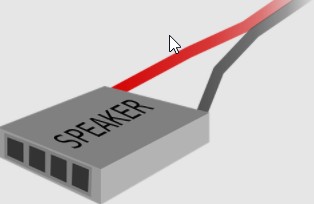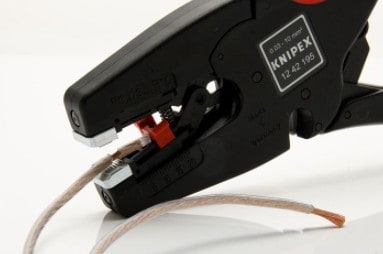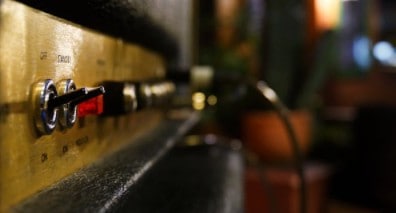You likely don't pay much attention to the ohm rating when purchasing a speaker unless you plan to use it with another speaker with a different ohm rating.
If you're looking to get the best sound quality out of both speakers and avoid damaging your amplifier, it is vital to match your speakers and your amplifier.
This article will tell you everything you need to know about 6 ohms vs. 8-ohm speakers and how they can be used together safely.
What are the differences between a 6 ohm and 8 ohm speaker?

This is a question that often comes up in the world of car audio. The truth is that they are pretty similar, but there are some things that you should know.
First, you need to understand two terms for speakers: impedance and sensitivity.
What does this mean for you?
It means that if you have a 6-ohm car audio system, it's best to use speakers with an impedance of 4 ohms or less. Of course, you can use an 8-ohm speaker, but it will cause your system to be underpowered, causing distortion and other problems.
Simply put, an 8-ohm speaker will offer a more manageable load for your speakers compared to a 6-ohm speaker.
A speaker with a lower impedance will require more power from your receiver than one with a higher impedance. Therefore, the more power that your receiver provides will make for a better sound.
A lower ohm rating indicates a higher resistance which means more power will be required to drive the speaker to a certain volume level.
Can I Use 6-Ohm Speakers on 8-Ohm Speakers?

Yes, you can. But, it is not recommended to use 6-ohm speakers on 8-ohm receivers. You may be able to get away with it, but you will likely notice a decrease in sound quality.
The best way to avoid damage to your equipment is to match your speaker impedance with your receiver.
The power handling of the speaker has to be considered as well. That's why the impedance and power handling should always be listed on the specification sheet. This way, you can connect them appropriately.
Some people are under the impression that all speakers must have a matching impedance (ohms), or else you will blow up your amplifier.
You can indeed blow up your amplifier by using mismatched speakers, but you can also blow it up by turning up too loud or not using a fuse.
Can you replace 6-ohm speakers with 8 ohms?
A common question asked by audio enthusiasts is whether you can swap 6-ohm speakers for 8-ohm speakers?
Of course, the answer is yes, but there are some pitfalls to be aware of before making the switch.
As long as both your receiver and speaker impedance are the same, it is acceptable to replace an 8-ohm speaker with a 6-ohm and vice versa.
However, there are a few things you need to be aware of before making the switch.
- First, an 8-ohm speaker will draw more power from your receiver than a 6-ohm speaker. So, if you are using an 8-ohm speaker with a low-powered receiver, you may experience distortion or other problems.
- Second, not all amplifiers are rated for 8-ohm speakers.
Therefore, if you are using an amplifier that is not warranted for 8-ohm loads, you could damage the amplifier by using an 8-ohm speaker.
In general, it is best to match the impedance of your speakers and receiver whenever possible.
How many watts is a 6-ohm speaker?
An 8-ohm speaker requires 109 watts, while a 6-ohm speaker requires 145 watts.
This means that you will have an easier time using a 4-ohm or 6-ohm speaker in your car than an 8-ohm model.
If you plan to put four speakers in your vehicle for sound reinforcement, check their impedance ratings first so you do not overload your amplifier and blow out your speakers.
Many people believe that when it comes to choosing a speaker, the more watts, the better, but there is more to it. As with anything else, too much of a good thing can be bad for you, and this is especially true with speakers and wattage.
The amount of wattage a speaker need depends on the speaker's impedance. A lower impedance speaker requires less wattage than a higher impedance speaker.
Can I mix 6-ohm speakers with 8-ohm equipment?
Yes, it's okay to mix speakers of different impedance ratings if the speaker's power rating is within 20% or less than that of your equipment.
For example, you would use 4-ohm speakers mixed with 8-ohm equipment as long as they are at least 10 watts apart in power rating.
Let me elaborate. This means that a 100-watt 4-ohm speaker and a 70-watt 8-ohm speaker would be okay.
Using mismatched speakers can damage your equipment, so if you are going to mix any impedance ratings, it is best not to stray away from the recommended power levels for a particular setup.
What amplifier do I need for 8-ohm speakers?

To drive speakers with an impedance of 8 ohms, you need an amplifier that is capable of producing 100 watts RMS per channel into 8-ohm loads or more.
This means that if you are using four 4-ohm speakers in your car's sound system, you would need at least 500 watts of total power to ensure that all the speakers will be driven properly.
Most people believe that when it comes to home audio, you need to match the impedance of your equipment in order to get the best sound quality. While this is generally true, there are a few exceptions.
For example, if you are using a low-powered device like an iPod to drive a small set of computer speakers?
Conclusion
Now you know the difference between 6 ohm and 8-ohm speakers. I hope you found this article helpful.
The 8-ohm speaker is in some ways still king of the road when it comes to raw power handling capability, even though the average enthusiast is almost certainly better off with 6-ohm speakers.
The 8 ohms can and will more often be pushed to its limits than the 6 ohms before showing signs of damage.
But that's where knowing your amplifier and music comes in. It's impossible to tell which will have a higher chance of failure unless you know the specific capabilities of each speaker and amplifier combo.
Related articles:
- 6 Best Budget Subwoofer for Cars in 2025 (Bass-Heavy)

